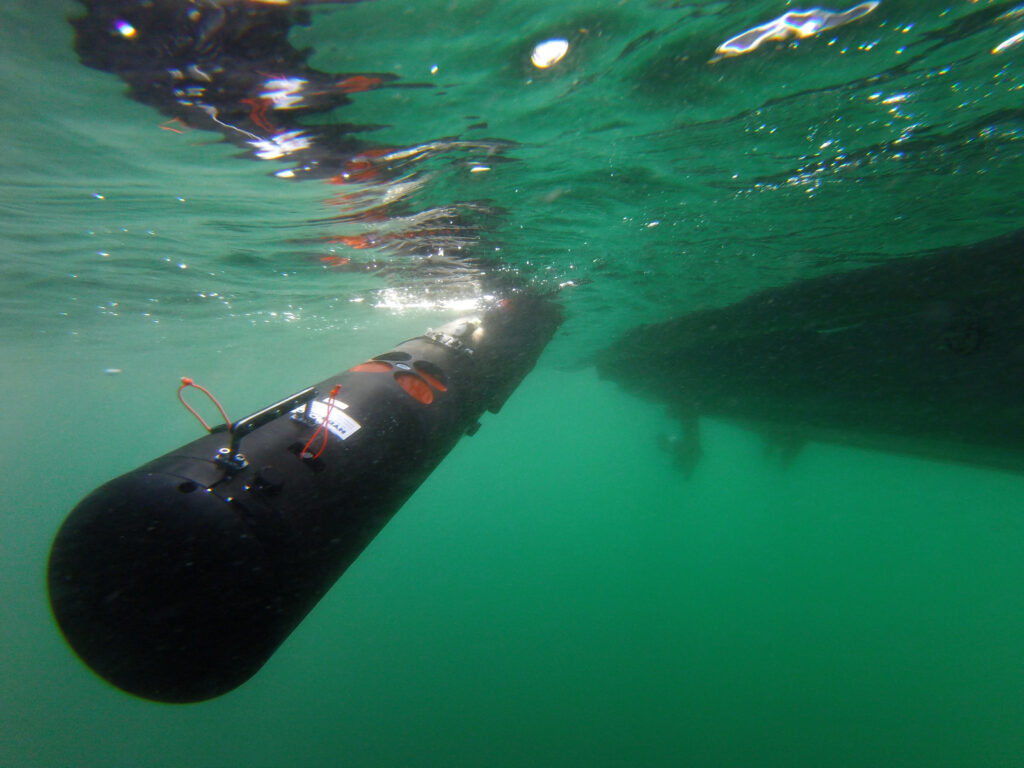
TROIA, Portugal — NATO, the Portuguese Navy, industry and other stakeholders recently conducted back-to-back exercises designed to integrate unmanned capabilities into naval operations and assist the alliance and its member states in maintaining an operational edge.
The Portuguese Navy-hosted REP(MUS) exercise — the navy’s Recognized Environmental Picture (REP) activity, amalgamated since 2019 with NATO’s Maritime Unmanned Systems (MUS) initiative — took place across September’s first three weeks. REP(MUS) merged into Dynamic Messenger, NATO Maritime Command’s inaugural maritime unmanned systems exercise, which took place in September’s final week. Both exercises occurred off Troia in southern Portugal.
The exercises aimed to drive forward NATO and member state integration of maritime unmanned systems into operational experimentation.
“These [exercises] are an accelerant to making sure we think ahead to stay ahead,” Vice Adm. Keith Blount, a UK Royal Navy officer and commander of Maritime Command, told a press briefing at Striking and Support Forces NATO headquarters in Lisbon.
“We’re setting commanders at sea real challenges in trying to adjust from a traditional command-and-control way of delivering warfighting capability to one that is very much at the technological edge, using equipment many of these commanders have probably not seen and operated with before,” Blount added. “That drives tactics, training, procedures, the education of officers … [and] the doctrine we follow.”
Regarding Dynamic Messenger, Blount said, “This has been quite a journey in the development and construction of this exercise, going back more than two years …. We build naturally on the success of REP(MUS), a well-established exercise, and now take it on to the next step — the integration of the capability into our [activities] at sea.”
For the journey’s next steps, Blount said, “One of the very first things that’s going to happen is we’re going to start planning next year’s Dynamic Messenger, building on the lessons from this year. We’re doing a lot of other work as well, to try and make operational experimentation more of a norm outside of exercises so we can have it as a free good to being out in the maritime commons, doing this without any detriment to the capability we are delivering day by day.”
Alongside MARCOM, Supreme Allied Command Transformation was the second NATO strategic-level headquarters involved in delivering Dynamic Messenger.
“SACT has particular roles around innovation and experimentation within the alliance, so Dynamic Messenger provides an excellent opportunity for us to pursue both those areas,” Royal Navy officer Vice Adm. Guy Robinson, SACT’s chief of staff, told the briefing. “Working closely with [MARCOM], we can come together hopefully to get some really useful insights from which we can both develop capability within the alliance and help allies shape their own capability investments.
“We’re always trying to look ahead and ensure we maintain that competitive edge, and to embrace those new technologies when the time is right for the alliance,” Robinson said. “Exercises like this can help showcase opportunities for allies to see where they may want to invest in the future.
“The real advantage of an exercise like [Dynamic Messenger] is that … by bringing Admiral Blount’s operational commanders into the picture, we then understand the real, practical application of these new technologies,” Robinson said. Unmanned systems “may work well in an isolated environment. [However], when you put them with commanders who have to deploy them, recover them, and see whether they are now more effective and more efficient, that’s when you get the real insight. That’s when you get the data you need to really see how they can change the battlespace.”
- UK Chief of Defence Staff Highlights Maritime Context Within Defense Review Refresh - December 21, 2022
- Naval Stakeholders Assess Lessons Learned from Ukraine Conflict for Future War at Sea - October 24, 2022
- NATO Uses Unmanned Systems Exercises to Stay Ahead in Capability Development - October 10, 2022






